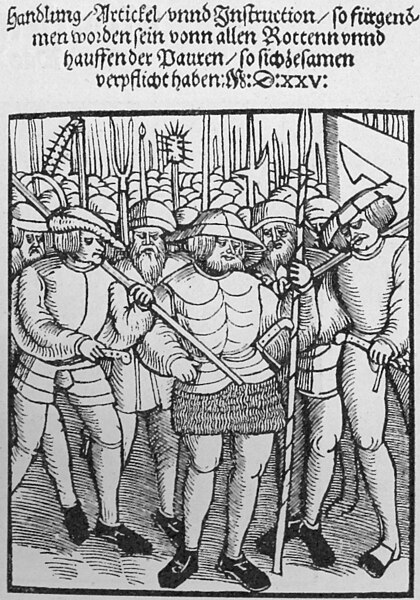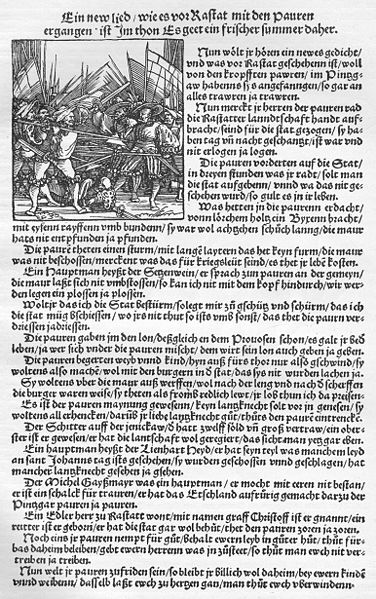The German Peasants' War, Great Peasants' War or Great Peasants' Revolt was a widespread popular revolt in some German-speaking areas in Central Europe from 1524 to 1525. It was Europe's largest and most widespread popular uprising before the French Revolution of 1789. The revolt failed because of intense opposition from the aristocracy, who slaughtered up to 100,000 of the 300,000 poorly armed peasants and farmers. The survivors were fined and achieved few, if any, of their goals. Like the preceding Bundschuh movement and the Hussite Wars, the war consisted of a series of both economic and religious revolts involving peasants and farmers, sometimes supported by radical clergy like Thomas Müntzer. The fighting was at its height in the middle of 1525.
Twelve Articles of the Peasants pamphlet of 1525
Flyer from the time of the Peasants' War
Bauernjörg, Georg, Truchsess von Waldburg, the Scourge of the Peasants
Wandering bands of insurgents during the German Peasants' War
The Hussite Wars, also called the Bohemian Wars or the Hussite Revolution, were a series of civil wars fought between the Hussites and the combined Catholic forces of Holy Roman Emperor Sigismund, the Papacy, and European monarchs loyal to the Catholic Church, as well as various Hussite factions. At a late stage of the conflict, the Utraquists changed sides in 1432 to fight alongside Roman Catholics and opposed the Taborites and other Hussite spin-offs. These wars lasted from 1419 to approximately 1434.
Battle of Hussites and Catholic crusaders, Jena Codex, 15th century
Burning of Jan Hus at the Council of Constance, Jena Codex, 15th century
The devil is selling indulgences, Jena Codex
The Hussite Wagenburg








